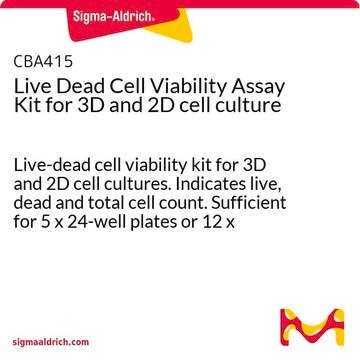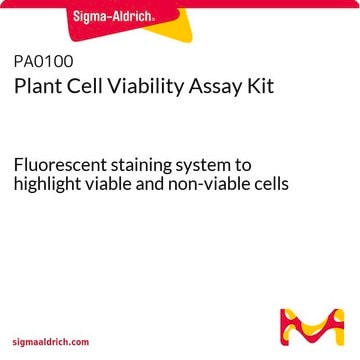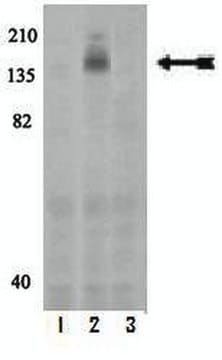This product requires preparation of a cell suspension and has not been validated for bacterial biofilms or cells attached to any surface.
04511
Live/Dead Cell Double Staining Kit
suitable for fluorescence
Sinónimos:
Staining kit for live/dead cells
About This Item
Productos recomendados
Aplicación
Solo componentes del kit
- Solution A (Calcein AM solution) 4 × 50
- Solution B (propidium iodide solution) 300 μL
Producto relacionado
Código de clase de almacenamiento
10 - Combustible liquids
Clase de riesgo para el agua (WGK)
WGK 2
Punto de inflamabilidad (°F)
185.0 °F - closed cup
Punto de inflamabilidad (°C)
85 °C - closed cup
Elija entre una de las versiones más recientes:
¿Ya tiene este producto?
Encuentre la documentación para los productos que ha comprado recientemente en la Biblioteca de documentos.
Los clientes también vieron
Artículos
Cell based assays for cell proliferation (BrdU, MTT, WST1), cell viability and cytotoxicity experiments for applications in cancer, neuroscience and stem cell research.
Cell based assays for cell proliferation (BrdU, MTT, WST1), cell viability and cytotoxicity experiments for applications in cancer, neuroscience and stem cell research.
Cell based assays for cell proliferation (BrdU, MTT, WST1), cell viability and cytotoxicity experiments for applications in cancer, neuroscience and stem cell research.
Cell based assays for cell proliferation (BrdU, MTT, WST1), cell viability and cytotoxicity experiments for applications in cancer, neuroscience and stem cell research.
-
Can this kit be used to assess cell viability within bacterial biofilms?
1 answer-
Helpful?
-
-
Can the live/dead double staining kit be used on fixed cells?
1 answer-
The kit is not designed for use with just dead cells. When cells are fixed, it typically results in cell death for all cells. Consequently, if all the cells are dead, it is expected that the Calcein AM would not be able to enter the cells, as Calcein AM is not a fluorescent molecule. The available data sheet states, "While the cells are viable, the calcein generated from CalceinAM by esterase in a viable cell emits strong green fluorescence (excitation: 490 nm, emission: 515 nm)." Therefore, Calcein-AM only stains viable cells. If all the cells are dead, the only observed staining will be from the Propidium Iodide - which is the dead cell stain reagent in kit 04511.
If the cells are stained while viable, it is possible to image the cells after they have been fixed in paraformaldehyde or other fixatives. Although this is a common practice in some laboratories, It's suggested to consider a 10-minute fixation instead of 30 minutes, as fixing for 30 minutes may not be advisable.Helpful?
-
-
How many assays or tests can be conducted using one kit of PN: 04511-1KT-F?
1 answer-
The 04511 kit consists of 2 components, with reagent B being the limiting reagent, requiring just 300 microliters of reagent. To prepare the staining solution, 10 microliters of Reagent A and 5 microliters of Reagent B are mixed with 5 ml of PBS. Each test necessitates 100 microliters of the staining solution. With 5 microliters of Reagent B being sufficient for 50 tests, 300 microliters of Reagent B is adequate for 60 batches of the staining reagent, resulting in 3000 tests (50 x 60). Although the maximum number of specimens might not always be stained in practice, the kit theoretically should allow for 3000 tests.
Helpful?
-
Active Filters
Nuestro equipo de científicos tiene experiencia en todas las áreas de investigación: Ciencias de la vida, Ciencia de los materiales, Síntesis química, Cromatografía, Analítica y muchas otras.
Póngase en contacto con el Servicio técnico










